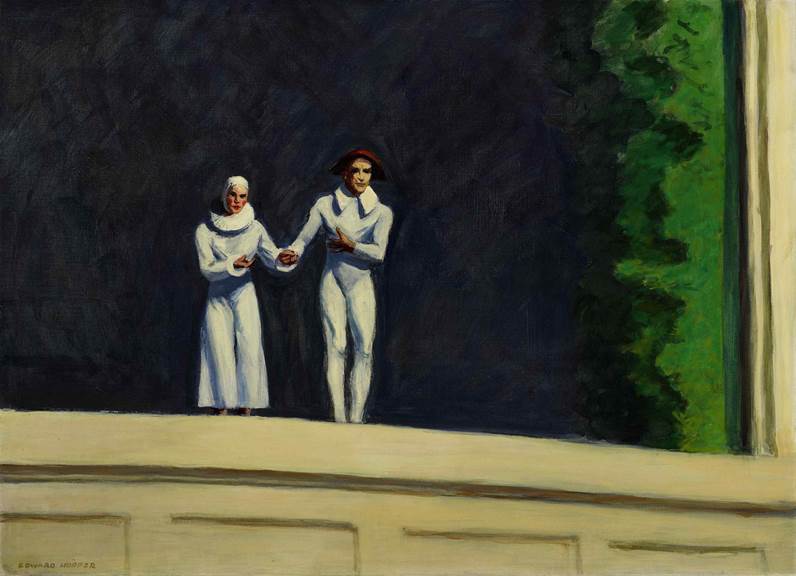
MANCHESTER, NH – On view at the Currier Museum of Art is Edward Hopper’s final painting, “Two Comedians.” Showing the artist and his wife taking a bow onstage, the painting is a moving farewell from Hopper, who specialized in observing people. This image of the theater once belonged to singer Frank Sinatra.
Hopper painted “Two Comedians” at the age of 83 when he and his wife were seriously ill. He died the following year. The painting seems to show Hopper bidding farewell to his art, and to the world.
“This autobiographic painting is a summation of Hopper’s life’s work,” stated museum curator Kurt Sundstrom. “It is a somber reflection of two people alone on a dark stage. They have a presence but it’s a presence of people who will soon disappear.”
The two figures on the stage are dressed as traditional comedians or clowns. This contrasts with the empty, haunted look in their eyes, and the personal circumstances of the artist nearing death. Edward Hopper was one of the greatest observers of American life in the middle of the 20th century. He captured the loneliness of life in modern cities in classical images such as Nighthawks, showing people isolated in a diner. The painting now on view at the Currier Museum is less well-known but provides a fascinating glimpse into the work of an iconic American artist.
“Two Comedians” will be on display at the Currier Museum of Art until January 2020. It is accompanied by other works by Edward Hopper and his contemporaries, on the theme of theatre and life in the American city.
About the Currier
The Currier Museum of Art is an internationally renowned art museum located in Manchester, New Hampshire. The Currier features European and American paintings, decorative arts, photographs, and sculpture, including works by Picasso, Monet, O’Keeffe, Andrew Wyeth, and LeWitt, with exhibitions, tours, and programs year-round.







